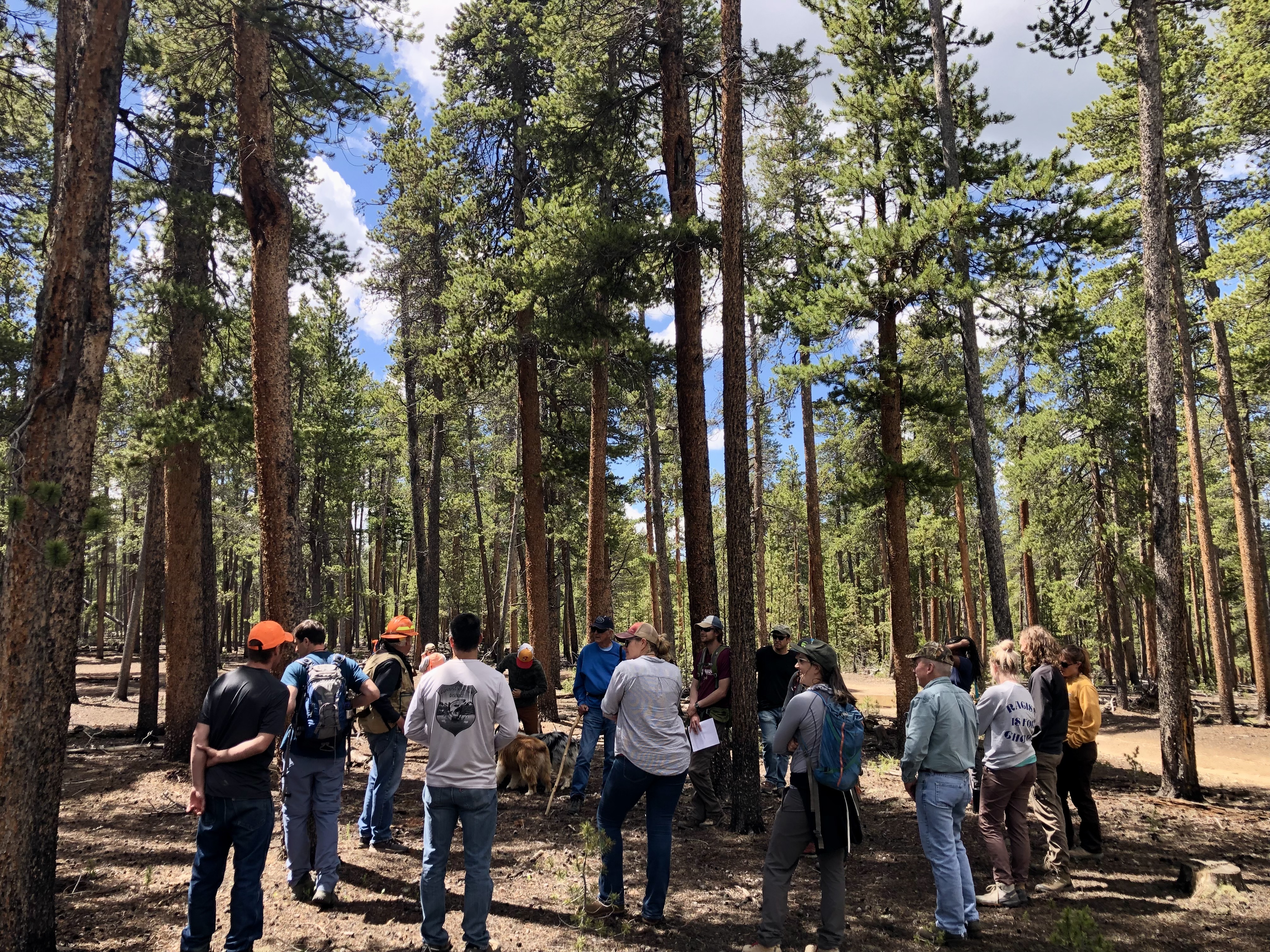
Key projected climate change impacts that the project team considered for the Taylor Park ASCC site include:
- Increased average annual temperatures, hottest day of the year, and average summer (JIA) highs
- Increased average annual precipitation days and average summer vapor-pressure deficit (VPD)
- Decreased coldest minimum temperatures and snow water equivalent
- Last spring freeze will occur earlier, and the first fall freeze will occur later in the year
- Increased growing season length and growing degree days
- Increased extreme fire danger days
- Increased risk of insect pest and forest pathogens
- Elevated drought risk
Climate change will present challenges and opportunities for accomplishing the management objectives of the Taylor Park ASCC site, including:
CHALLENGES
- Changes in precipitation patterns, decreased snow retention, and increased drought could increase tree stress and lead to increases in losses from forest insects, diseases, and wildfire
- Warmer winter temperatures will allow for increased survival and population growth of pest and pathogens such as spruce bark beetle, spruce budworm, mountain pine beetle, white pine blister rust, and lodgepole dwarf mistletoe
- Greater potential for wildfires during summer and early fall months due to drought and rising temperature
- Conditions can dry fuels, increase fire danger, and reduce the historical fire return interval
- Possible shift in site-specific suitable habitat for tree species across the Taylor Park area
- Changes in seasonality and shorter, milder winters could lead to challenges with the timing of vegetation management and when loggers can harvest

OPPORTUNITES
- The Taylor Park area will experience hotter and drier summers and shorter and milder winters which will lead to longer growing seasons
- Increased habitat range/suitability for tree species better adapted to future conditions: Ponderosa pine is more drought and heat tolerant; limber pine is more drought tolerant; lodgepole pine, subalpine fir, and aspen are more cold tolerant; ponderosa pine, and Douglas fir are more fire resistant.
- Fires allow lodgepole pine to regenerate, when fires are less severe and frequent, lodgepole is successional, and replaced by shade-tolerant species (Douglas fir, subalpine fir, and Engelmann spruce)
- Fire may dampen impacts of insects
- Shifting away from a lodgepole pine dominated forest will increase habitat diversity for snowshoe hare and lynx


